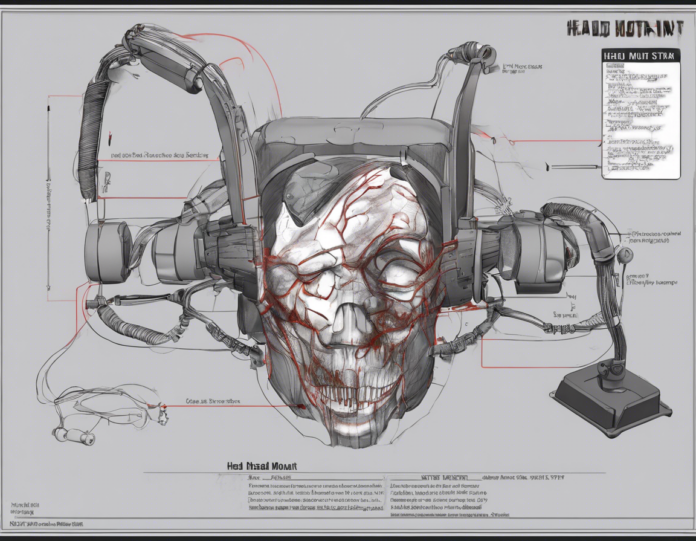Introduction
Virtual Reality (VR) gaming provides an immersive and interactive experience like no other. However, prolonged sessions can lead to discomfort and even head mount strain, commonly known as “VR fatigue.” This occurs due to the weight of the VR headset, restrictive headgear, and extended use. To enhance your gaming experience and reduce discomfort, it’s essential to follow specific tips and techniques. In this guide, we’ll explore various strategies to help you avoid head mount strain and enjoy extended VR gaming sessions comfortably.
Understanding Head Mount Strain
Head mount strain refers to the discomfort and fatigue experienced in the head and neck area after wearing a VR headset for an extended period. This strain can result from various factors, including the weight of the VR headset, improper fitting, tight head straps, and poor posture during gameplay. Common symptoms of head mount strain include headaches, neck pain, eye strain, and overall discomfort. To prevent head mount strain and ensure a more enjoyable VR gaming experience, consider the following tips:
1. Choose the Right VR Headset
When selecting a VR headset, opt for a model that is lightweight and comfortable to wear for extended periods. Some headsets are designed with ergonomic features that distribute weight evenly and reduce pressure on the head and neck. Research different models and try them on if possible to determine which one feels the most comfortable for you.
2. Adjust the Headset Properly
Proper adjustments are crucial to minimizing head mount strain. Ensure that the VR headset is positioned securely on your head, with the display at eye level. Adjust the head straps to fit snugly but not too tight, as excessive pressure can lead to discomfort. Additionally, some headsets allow for interpupillary distance (IPD) adjustment, which can help reduce eye strain and improve overall clarity.
3. Take Regular Breaks
Frequent breaks are essential during extended VR gaming sessions to prevent head mount strain and eye fatigue. Follow the 20-20-20 rule: every 20 minutes, take a 20-second break and look at something 20 feet away to reduce eye strain. Use these short intervals to stretch your neck and shoulders, readjust the headset if needed, and hydrate to stay comfortable.
4. Maintain Good Posture
Proper posture is key to reducing head mount strain and minimizing discomfort during VR gameplay. Sit or stand up straight with your shoulders relaxed and avoid slouching or leaning forward excessively. Adjust the height of your chair or VR setup to ensure that your head is in a neutral position, avoiding unnecessary strain on the neck and upper back.
5. Optimize the Gaming Environment
Create a comfortable and ergonomic gaming environment to enhance your VR experience and reduce head mount strain. Ensure proper lighting to prevent eye strain, eliminate glare on the VR headset’s lenses, and free up space for unrestricted movement. Consider investing in anti-fatigue mats or padded flooring if you’re playing in a standing position for added comfort.
6. Use Accessories for Support
Certain accessories can improve comfort and reduce head mount strain during VR gaming. Consider using a counterbalance weight on the back of the headset to distribute weight evenly and reduce pressure on the front of your head. Foam padding or silicone covers can also provide added cushioning and prevent skin irritation from prolonged use.
7. Stay Hydrated and Take Care of Yourself
Hydration is essential for overall comfort and well-being during VR gaming sessions. Remember to drink water regularly to stay hydrated and prevent headaches or fatigue. Additionally, listen to your body and take breaks as needed. If you experience discomfort or head mount strain, pause the game, rest, and adjust your setup before resuming play.
Frequently Asked Questions (FAQs)
Q1: How long is it safe to wear a VR headset continuously?
A1: It’s recommended to take a 10-15 minute break for every hour of VR gameplay to prevent head mount strain and eye fatigue.
Q2: Can VR gaming cause long-term damage to the eyes?
A2: While short-term discomfort like eye strain can occur, there is no conclusive evidence that VR gaming leads to long-term eye damage.
Q3: What are some exercises to relieve neck and shoulder tension after VR gaming?
A3: Gentle neck stretches, shoulder rolls, and chin tucks can help alleviate tension and improve blood flow to the head and neck area.
Q4: How can I prevent motion sickness while playing VR games?
A4: Start with shorter gaming sessions, gradually increasing gameplay time to build tolerance. Ensure proper ventilation and avoid playing on an empty stomach.
Q5: Is it normal to feel disoriented or dizzy after removing the VR headset?
A5: Some users may experience a brief period of disorientation or “VR hangover” after prolonged use. Taking breaks and maintaining good posture can help alleviate these symptoms.
Conclusion
By following these tips and techniques, you can minimize head mount strain and discomfort during VR gaming sessions. Remember to choose a lightweight and ergonomic headset, adjust it properly, take regular breaks, maintain good posture, optimize your gaming environment, use supportive accessories, and prioritize self-care. If you experience persistent head mount strain or discomfort, consult a healthcare professional for personalized advice. With the right approach and adjustments, you can enjoy extended VR gaming sessions comfortably and immerse yourself fully in virtual worlds.









